

Non-GMO products are foods without genetic engineering or genetically modified organisms. Choosing them can benefit your health and support the environment. This article explains what non-GMO means, its benefits, and how to identify non-GMO products.
Non-GMO products are free from genetically modified organisms and empower consumers to make informed choices through reliable certification standards.
Consuming non-GMO foods can offer health benefits, such as reduced allergenicity and higher nutrient density, due to their cultivation practices.
Non-GMO farming promotes environmental sustainability and biodiversity, though farmers face challenges such as lower yields and risks of cross-contamination from GMO crops.
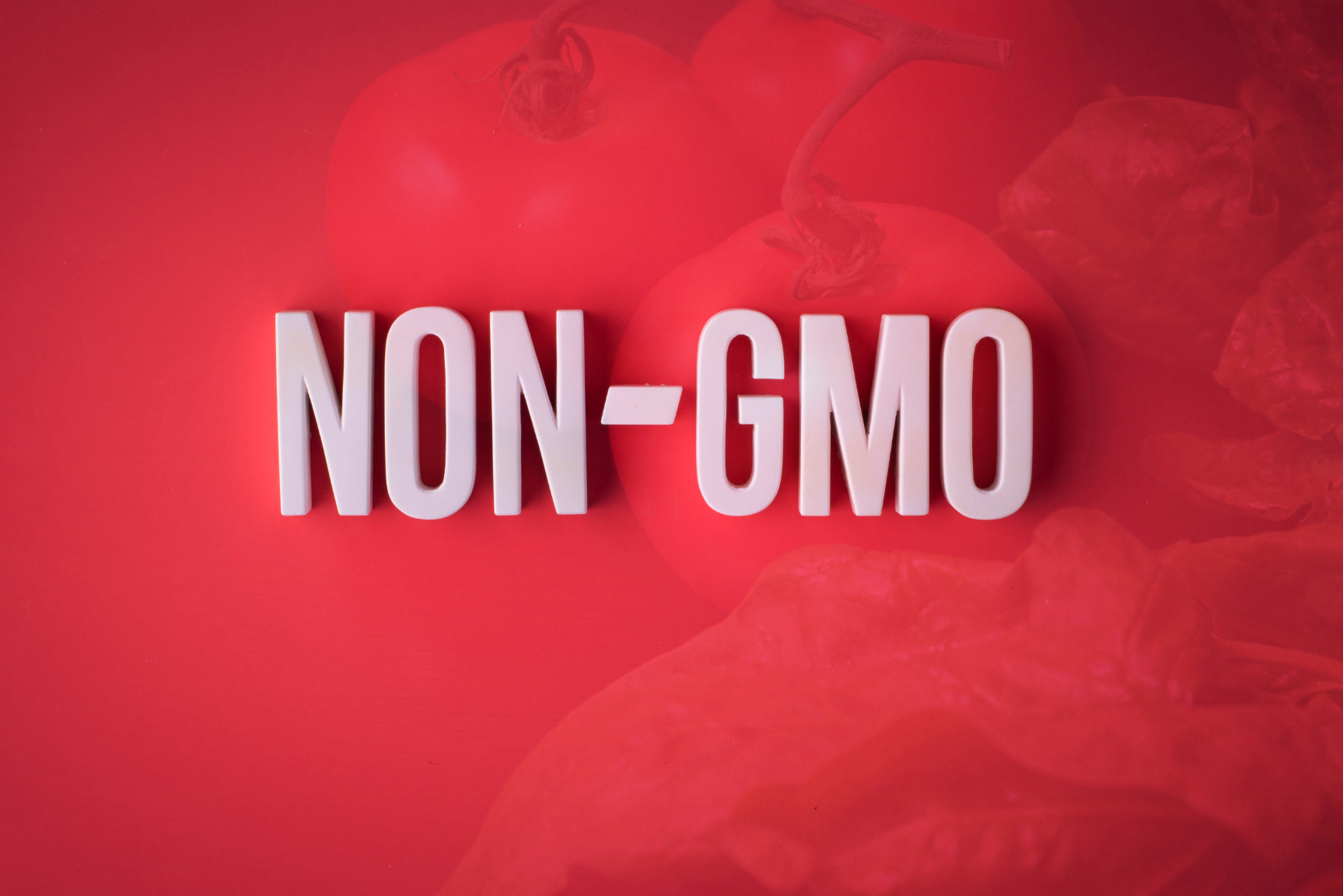
Non-GMO products are those made without any genetic engineering or genetically modified organisms (GMOs). This means that the ingredients in these products have not been altered at the genetic level using modern biotechnology, ensuring they are non genetically modified food.
Non-GMO labels empower consumers to make informed food choices. As consumer demand grows, these labels ensure transparency and foster trust.
The Non-GMO Project standard is a leading certification in the US, providing a reliable way for consumers to identify non-GMO foods.
When shopping for non-GMO foods, you’ll find a variety of options readily available. Common non-GMO products consist of various items, including:
soy milk
corn chips
tomatoes
canola oil
Look for non-GMO labels or certifications when buying processed foods to avoid genetically modified ingredients.
Additionally, consumers can opt for organic grains, heirloom varieties, quinoa, or rice as alternatives to avoid GMO exposure.
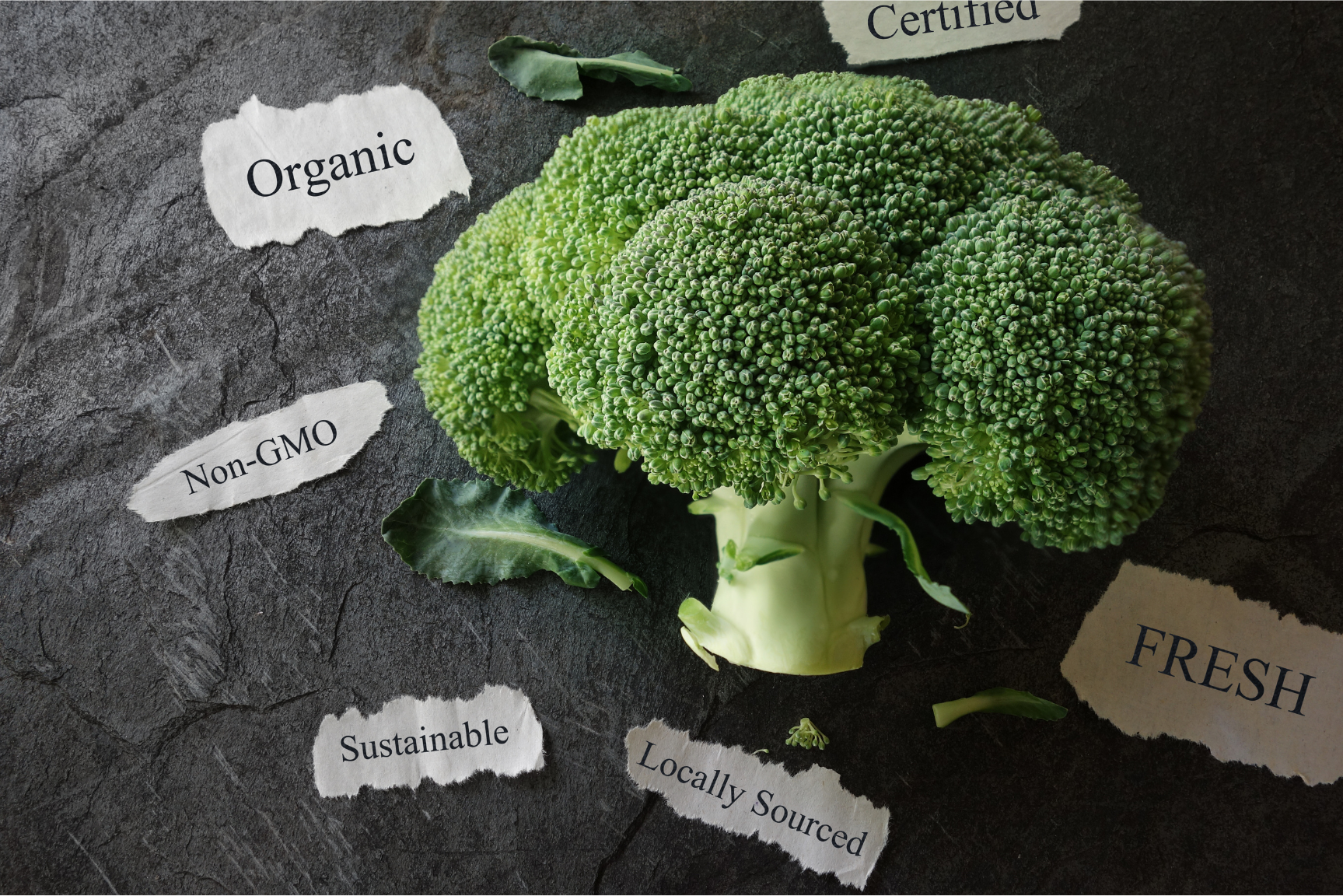
Non-GMO foods offer numerous health benefits, including a reduced risk of allergies since they are less likely to contain novel proteins that trigger allergic reactions. These foods often boast higher mineral and antioxidant content, enhancing overall health.
Consuming non-GMO foods also avoids the risk of ingesting animal products injected with antibiotics, which can negatively impact health.
Traditional breeding methods used for non-GMO foods typically do not introduce new proteins that cause allergies. As a result, non-GMO foods have significantly lower allergenicity compared to their genetically modified counterparts.
This makes non-GMO foods a safer option for individuals with food sensitivities or allergies.
Non-GMO crops are often grown using organic practices, which enhance their nutrient profiles. These farming methods enhance soil health and minimize synthetic input reliance, yielding crops with higher mineral and antioxidant content. Advanced techniques such as hydroponics also enhance the nutritional value of non-GMO foods by precisely controlling nutrient delivery.
This combination of organic food practices and innovative farming techniques ensures that non-GMO foods are nutritionally dense and beneficial for health.
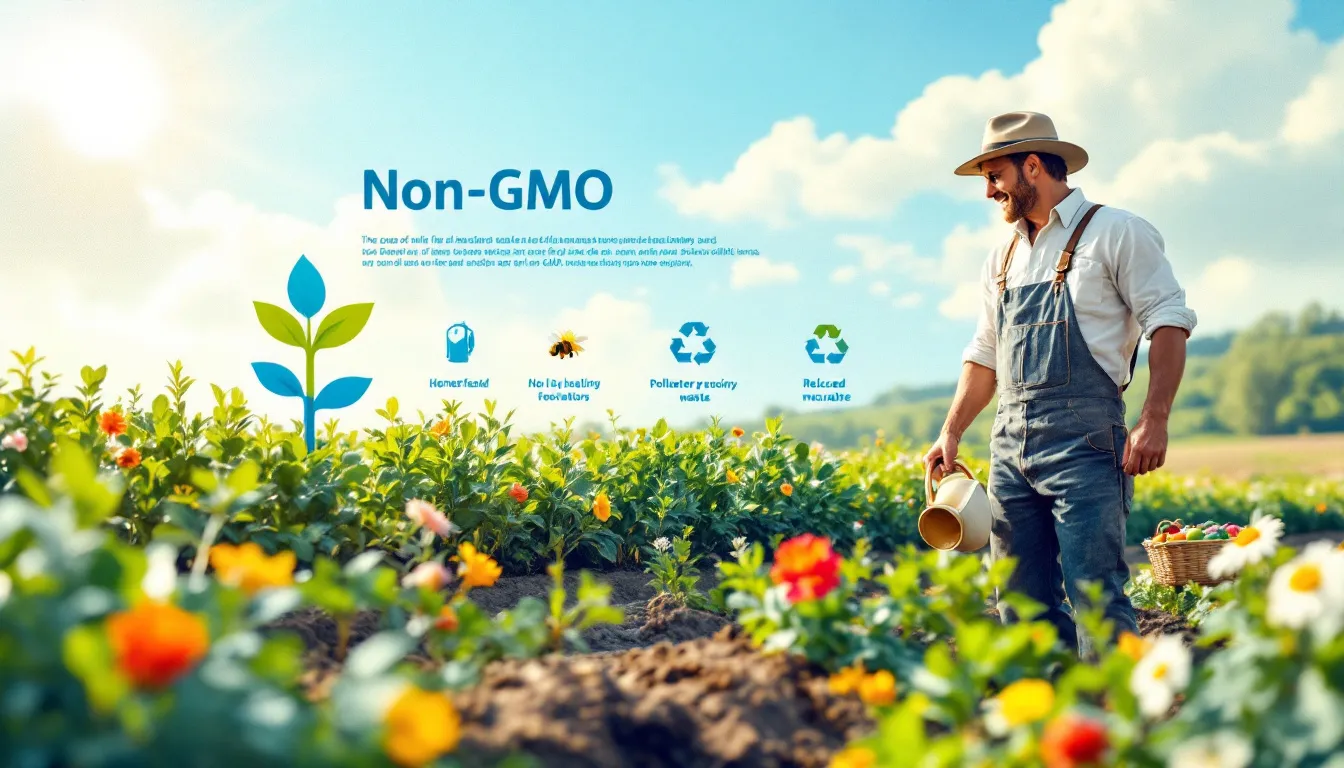
Non-GMO farming practices offer significant environmental benefits. These methods often involve crop rotation and natural cultivation techniques, which help maintain soil fertility and enhance biodiversity. In contrast to GMO farming, which can create superweeds and superpests, non-GMO farming supports a healthier ecosystem.
Non-GMO farming avoids genetically modified organisms, promoting sustainable practices that benefit the environment.
Non-GMO farming supports genetic diversity by encouraging the growth of diverse crops and maintaining a wide variety of traditional and heirloom crops. This practice helps preserve the genetic diversity within the ecosystem, which is crucial for the resilience and sustainability of our food systems.
By promoting biodiversity, non-GMO farming contributes to a healthier and more balanced environment.
Non-GMO agriculture centers around sustainable farming practices. Techniques like crop rotation, composting, and natural pest control enhance soil health and reduce erosion. Additionally, innovations like vertical farming can significantly reduce the carbon footprint associated with transporting produce by growing food closer to urban consumers.
These environmentally friendly practices ensure that non-GMO farming remains sustainable and beneficial for the planet.
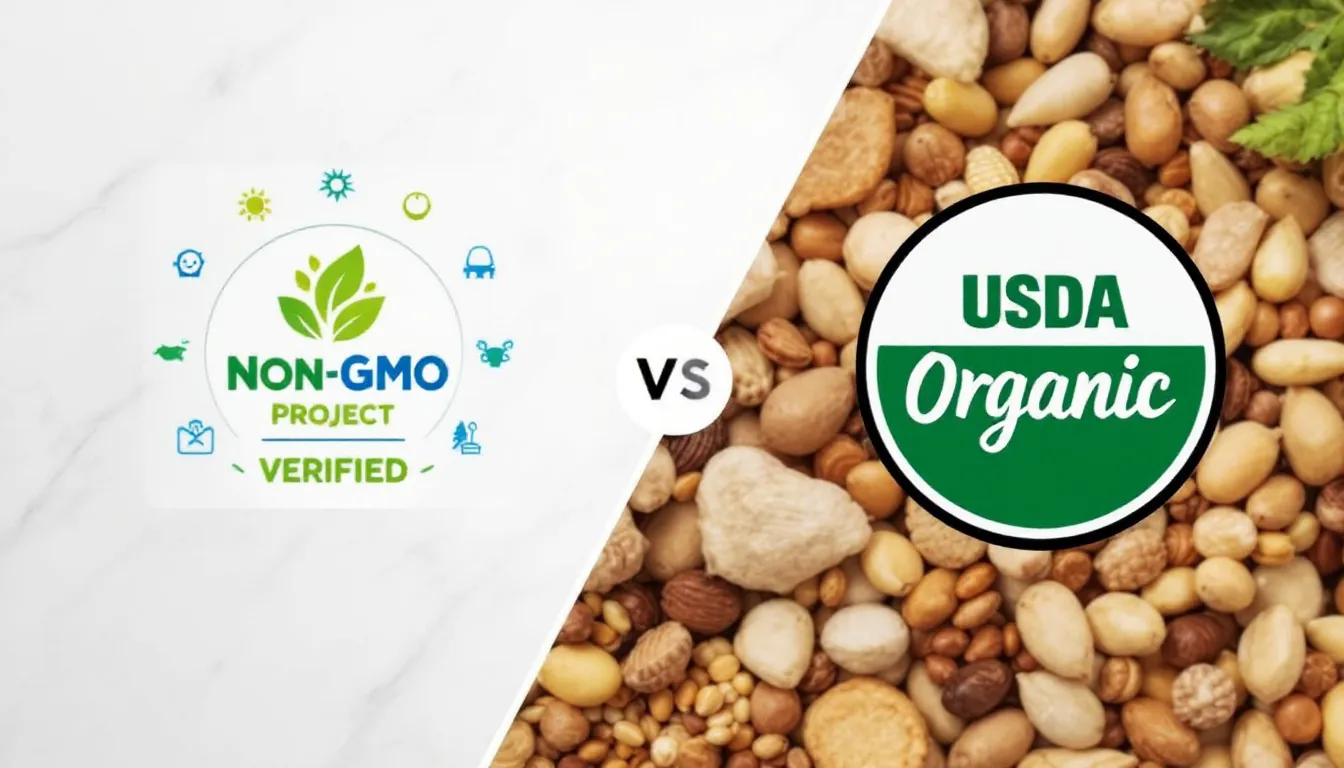
Both non-GMO and organic certifications aim to offer healthier food options but differ in scope and standards. Organic certification encompasses a wide range of agricultural practices, banning synthetic fertilizers and pesticides, while non-GMO certification focuses solely on excluding genetically modified organisms.
To avoid GMOs, consumers frequently choose products certified organic as organic or labeled non-GMO.
Organic certification requires a rigorous process, including a three-year transition during which growers must avoid GMOs. Conversely, Non-GMO Project verification mandates testing for high-risk ingredients and sets a 0.9% threshold for GMO contamination without a transition period.
Both certifications must be renewed annually to ensure compliance.
Organic farming strictly prohibits the use of synthetic fertilizers and pesticides, promoting a more natural cultivation process. On the other hand, non-GMO farming may still employ these substances, which can impact the overall environmental benefits.
Understanding these differences can help consumers make more informed choices about the food they purchase.
Non-GMO farmers face several challenges, including lower yields and the risk of cross-contamination from adjacent GMO fields. These challenges affect the economic viability of non-GMO farming, making it more demanding and labor-intensive.
Despite these obstacles, many farmers remain committed to non-GMO practices due to their environmental and health benefits.
Non-GMO farmers face significant threats from nearby GMO fields due to pollen transfer, seed escape, and mixing during transportation or storage, leading to unwanted GMO presence in non-GMO crops.
Such contamination can cause financial losses for farmers due to market restrictions and potential certification loss.
Non-GMO crops typically yield less compared to their genetically modified counterparts. Additionally, these crops often require more strategic pest management practices due to the absence of genetically engineered pest resistance traits.
These issues lead to higher production costs and increased labor demands for non-GMO farmers.
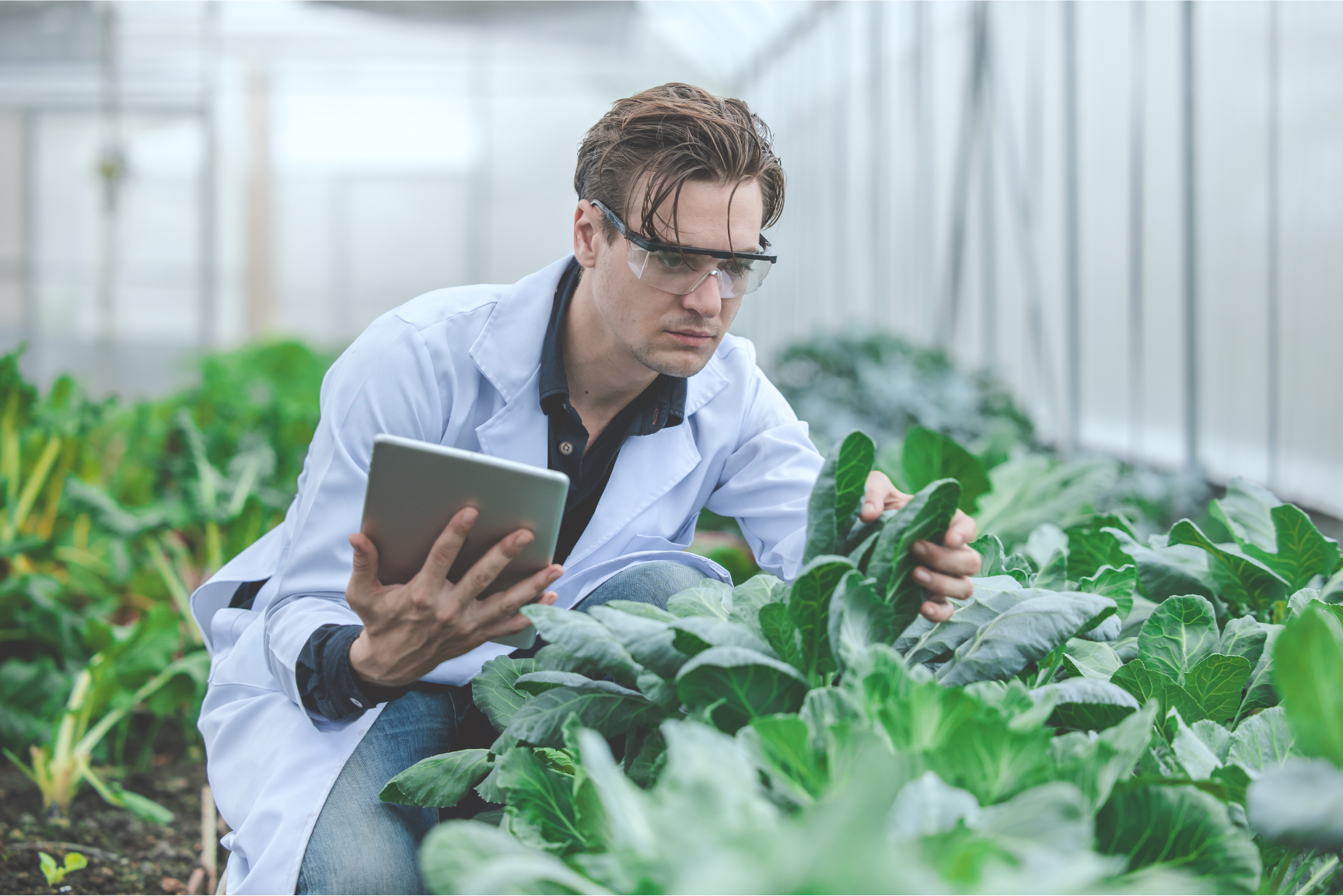
Emerging trends in non-GMO agriculture aim to tackle farmers’ challenges by improving productivity and efficiency while preserving non-GMO integrity.
These trends include advanced techniques like hydroponics and vertical farming, which offer sustainable solutions for growing non-GMO crops.
Hydroponic systems offer a controlled environment, minimizing GMO contamination risk and enabling year-round non-GMO crop production. For instance, Eden Green employs lab-like greenhouses to shield crops from pests without harmful chemicals, ensuring a safe food supply.
This method is particularly effective for growing non-GMO salad greens and fresh herbs.
Vertical farming is revolutionizing non-GMO agriculture by allowing for the efficient use of space and resources. This method enables year-round production of a wide variety of non-GMO crops without the need for genetic modification.
Companies like Eden Green Technology exemplify sustainable practices in agriculture, offering hundreds of varieties of produce that are not genetically engineered.
Identifying non-GMO products becomes easier if you know what to look for. Opt for organic and certified non-GMO products, read labels thoroughly, and choose whole, unprocessed foods.
The Non-GMO Project plays a crucial role in ensuring that consumers have access to non-GMO food options.
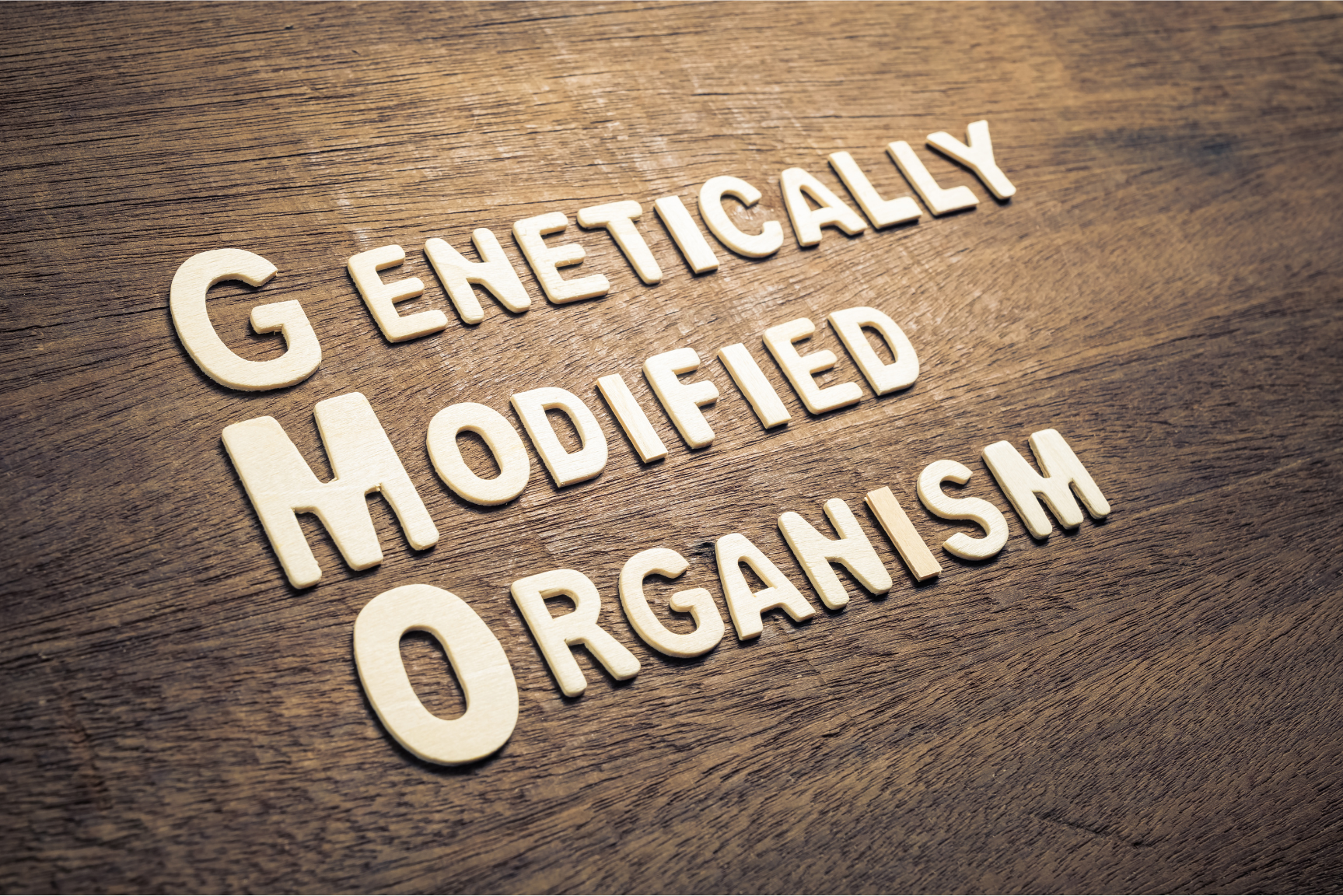
Reading labels ensures the products you buy are genuinely non-GMO. Look for terms like ‘non-GMO’ or ‘GMO-free’ on packaging. Some products may bear phrases like ‘no GMOs’, indicating they are free of genetically modified components even without formal certification.
Thoroughly check labels, especially for processed foods that might contain ingredients from high-risk crops.
Avoid high-risk major gmo crops such as alfalfa, canola, corn, and cotton, as well as papaya, potato, soy, sugar beet, and zucchini. These are commonly genetically engineered foods, so seek non-GMO options.
Steering clear of these high-risk crops helps minimize GMO exposure.
The Non-GMO Project plays a vital role in preserving and enhancing the non-GMO food supply through rigorous verification and education initiatives. By providing a transparent and trustworthy verification process, the Non-GMO Project promotes consumer choice and ecological sustainability.
Their efforts provide consumers with reliable information about GMO content in food products.
The Non-GMO Project Verified seal indicates that a product meets strict GMO avoidance standards, signifying it has undergone stringent testing to ensure it is free from genetically modified organisms.
As the most recognized non-GMO label in North America, the Non-GMO Project Verified seal significantly enhances product appeal and consumer trust.
The Non-GMO Project actively engages in public education campaigns to inform consumers about the importance of labeling and farming practices that avoid GMOs. They advocate for stricter regulations regarding GMO transparency in food products and promote initiatives that support non-GMO farming practices.
These efforts help increase awareness and drive the demand for non-GMO foods.
The benefits of choosing non-GMO products are clear, from reduced allergenicity and enhanced nutrient density to positive environmental impacts and sustainable farming practices. Understanding the differences between non-GMO and organic certifications, as well as the challenges faced by non-GMO farmers, can help consumers make informed decisions. The Non-GMO Project’s verification and advocacy efforts play a crucial role in ensuring transparency and promoting non-GMO foods. By choosing non-GMO products, we can contribute to a healthier future for ourselves and the planet. (1,2)
Non-GMO means that a product is made without genetic engineering and does not include ingredients derived from genetically modified organisms.
To identify non-GMO products, you should look for the Non-GMO Project Verified seal, read labels for terms such as 'non-GMO' or 'GMO-free', and opt for organic foods. These steps will help ensure that you are making informed choices.
Common non-GMO foods include soy milk, corn chips, tomatoes, and canola oil, ensuring you can make informed choices in your diet. Selecting these options helps support non-GMO agriculture.
Non-GMO foods are generally considered healthier due to their association with a reduced risk of allergies, improved immune function, and higher levels of minerals and antioxidants. Therefore, choosing non-GMO options can contribute positively to overall health.
The Non-GMO Project plays a critical role in ensuring a reliable non-GMO food supply by implementing strict verification processes and engaging in educational efforts, thereby supporting consumer choice and ecological sustainability.
Share:
Creatine Before and After: Real Results and Benefits You Can Expect
Top Tips for Ensuring GMP Compliance in Your Manufacturing Process